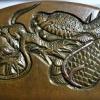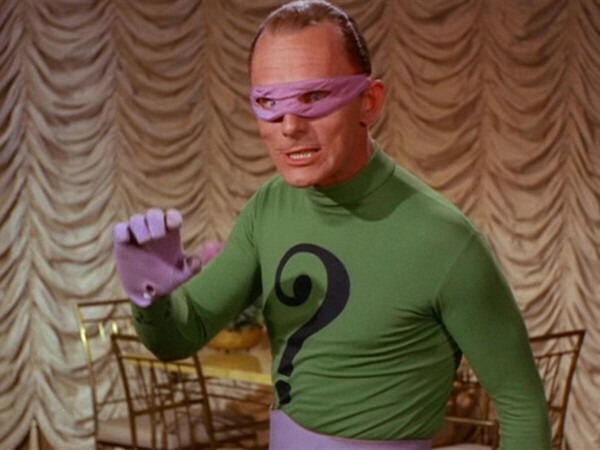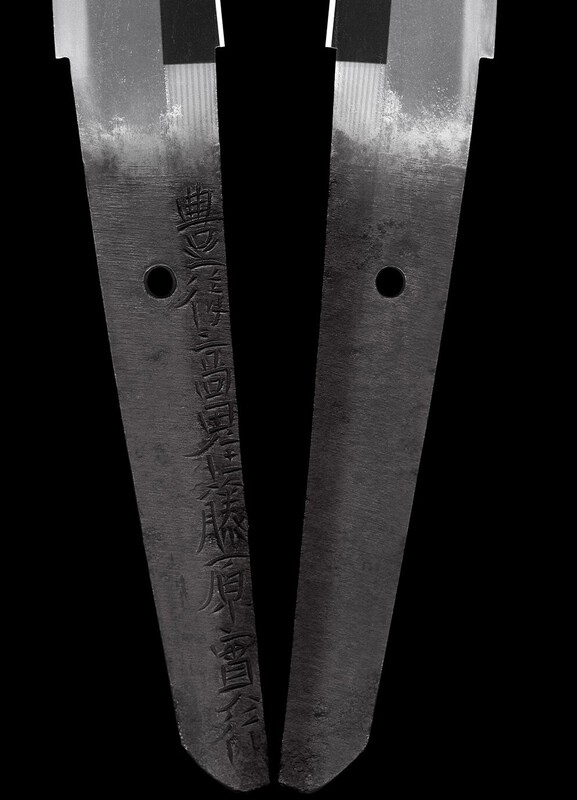-
Posts
6,722 -
Joined
-
Last visited
-
Days Won
37
Content Type
Profiles
Forums
Events
Store
Downloads
Gallery
Everything posted by Alex A
-
Takada worked in so many styles that it is hard to keep a track of. Sure ive seen a book somewhere that is purely based on their swords fooling folk as Bizen, may of been for sale at Touken Komachi if i remember correctly, mentioned it in an old Takada sold page
-
Yes, agree, and that has been my thought for a long time in this thread As said, i was just considering other possibilities. Its the dimensions and hamachi throwing in a curve ball
-
As said earlier, when i see a slender blade it always gives me concerns This blade is only approx 2.5cm width at the hamachi with an healthy lot left on at the hamachi, Its a possibility this is a late Edo tourist piece. Ive seen them, where smiths want to save material and just put together something that a tourist will go home with. In fact, i bought one at an arms fair, puzzled me for a while. Not certain and don't want to start going on about hamachi again, but you have to try and see the full picture. With all the details addeds, makes a difference. That had a nakago that looked like it had been messed with too, bit of an odd shape. Something about the hamon too which reminds me of late Edo Bizen type. Come across boys days/chigosahi swords that look similar, they were made by late Edo Bizen schools. Mumei, with a ji- mei added.. Slender nakago too. Though, just a thought and not sure yet.
-
Jimmy, as funny as it is arguing sometimes. Often seen those that treat folk with disrespect fall, karma My philosophy(if spelt right) , treat folk with respect and you shall receive respect. In my experience of 50 years, ive seen Karma put more things right than i can care to imagine be nice or meet karma
-
Still without dimensions Looks really slender and always kind of careful around slender blades with opinions Actually, beginning to think boys day sword is even a possibility at 45cm and with whats available Difficult from whats available
-
Not easy from the images but looks like some Masame in the shinogi-ji (in image above near habaki) Yo, with the hamon. You would need to confirm. Just looking for clues.
-
Also John, you need to help folk to help you. Folk wont search through other threads, need images including boshi
-
Agree, lets get back to the sword and stop talking about holes and hamachi.
-
-
What's even more crazy is that you have actually stated you have seen them!!!!!!!!!!!!!!!!! Re-read your posts................Kamakura
-
Jacques, I find your ignorance astounding, really do. Do you not think out of the millions of blades produced that some made it all the way to the present day without being polished to death Some may have just seen a present day polish. Occasionally, real oddballs turn up that make you think, wow. As said, not spending all day looking for these oddballs to please you. Your very narrow minded.
-
Jacques, this what you do. You sit on a very tall horse coming out with all kinds of riddles, like the Riddler off Batman and when you don't get your way you become insulting, like a spoilt brat You share stuff from books, i share stuff i see There is a difference, your lacking in knowing what is out there.
-
Jacques, it is early Edo. https://www.samuraishokai.jp/sword/22616.html As said, got better things do, you take a look about and you may be surprised
-
See above, not spending all day searching just to please you
-
-
Jacques, every so often when looking at sales sites i notice old swords with healthy hamachi, nothing new. Maybe you don't look often enough Would rather base an opinion on the entire blade then just focus on the hamachi or mekugi ana, sigh.
-
Aye, we need better pics. If the work matches that of a smith but the mei looks dodgy then there is always a possibility of Dai-mei or drunk smith
-
Seen papered old swords with a surprisingly healthy hamachi, more research needed. Also, to go to the trouble of making a Showato resemble a wak of a really obscure smith strikes me as a lot of bother for nothing.. Some dimensions above Jacques, not all
-
Well no, not if the smith filed the ana. You do come swords with burrs and ultra crisp edges to the ana where it is obvious they where drilled. Difficult unless excellent high res images. To pull up examples i would just go on Aoi and look at WW2 era blades etc, as a speedy way to view. Quick example, drilled 1860. Never going to look at these holes and wonder if they were punched or not.
-
One obvious feature that is well know on drilled ana and the only thing i look for.........................Burrs Lets face it though, not always present for obvious reasons.
-
John, could do with better pictures of your blade, then over the weekend sure there are some that if they get a spare minute will take a closer look. cheers. Machi-okuri or not is always a subject that gets folk harassed Hence why i started the thread below .... With regards hamon, to know if a blade is machi-okuri or not you really need to compare with UBU examples of that particular smiths work. Folk often assume that if the hamon runs into the nakago then the blade has been altered but its a fact that an hamon running into the nakago is not uncommon for a number of smiths. A few clues to show a sword is machi-okuri...... TWO ana (though as pointed out by Jacques, ONE ana should whoever owned it have the new tsuka made to fit the original ana). Folk give opinions based on the information they have picked up over the years, seen enough Machi-okuri on single hand Bizen swords to form that opinion. A change in the yasurime/patina. If you look at UBU blades that have not been messed with, although sometimes worn you will notice a pattern as to where these features end on the nakago. If shortened then you may see a disturbance that stands out. Look at some very old swords that have had machi-okuri done in later life and sometimes it is obvious. Not always straight forward though as it depends on the level of finish when a blade was shortened and the level of corrosion/wear ever since, just clues. Below, randomly picked 2 nakago that are what you look for when UBU. Look where the yasurime/patina end and compare to a blade that is obviously machi-okuri I do wonder sometimes though why folk don't allow for variation to rules and start arguing, nothing is straight forward in this hobby, there are always curve balls, so to speak.
-
Thanks John, Would forget about the machi-okuri and just concentrate on whether the work matches that of the mei or that of Takada and take it from there. Christian, you said it looks good, did you look into it ?
-
Jacques, get your point about 2 mekugi- ana not always being a sign of machi-okuri. Though with machi-okuri there is 2 mekugi-ana in lots of examples. A new tsuka would be needed. No doubt there are examples with just one ana. Lots of variation out there. Its not a one size fits all scenario.
-
Aye, machi-okuri http://www.ksky.ne.jp/~sumie99/suriage.html What is the actual length of your wak ? Ps, all this is very difficult from images,
-
Just to add, after a quick look Nakago Jiri, Yasurime good for Sue Takada. They were known for making thick blades and making swords that resembled other schools. Just a pointer to maybe look more in to.









